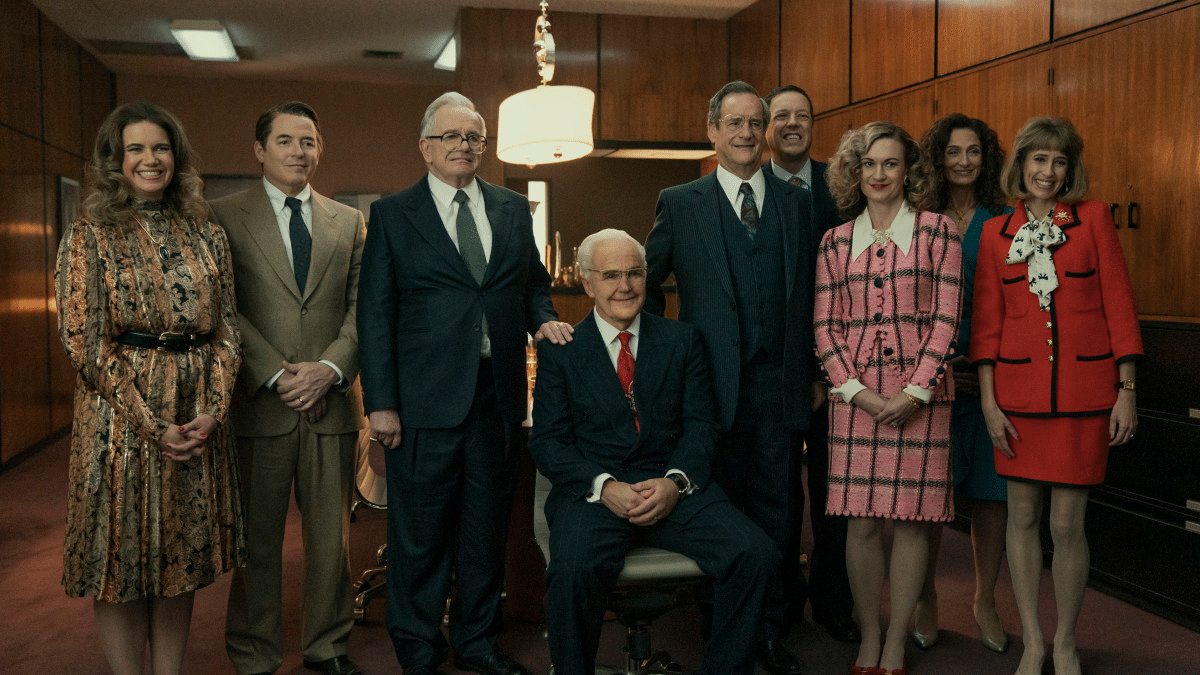Not long ago, the Sackler family name was etched on the world’s most prominent museums and buildings, from the Louvre and the Metropolitan Museum of Art to Harvard and the University of Oxford.
Today, the Sackler family is at the center of a monolithic controversy in the USA for its part in the devastating opioid crisis. Despite the ongoing legal actions against the family, the dynasty remains rich.
The Sackler family’s net worth in 2024 still counts billions of dollars because the case is not settled. Today, their net worth is still around $13 billion.
If their proposed settlement is accepted, the family will lose $4.5 to $6 billion, still leaving them one of the wealthiest families in the US.
The Sackler dynasty is at the center of one of Netflix’s most-watched drama series, Painkiller, which chronicles the origins of the opioid epidemic in the US.
However, while parts of the show are fictional, it is based on a true story and the Sackler family is very real – and so is the opioid crisis.
How Much is the Sackler Family Worth in 2024
- The Sackler family, despite legal challenges over their role in the opioid crisis, has a net worth of around $13 billion in 2024.
- Purdue Pharma, the family-owned company, generated significant revenue from OxyContin, contributing $13 billion to their wealth.
- Aggressive marketing tactics by Purdue Pharma have been linked to the opioid epidemic in the US.
- Ongoing legal battles could impact their fortune, with a potential settlement costing them $4.5 to $6 billion.
- The family’s financial standing remains substantial, though the future holds uncertainties due to legal proceedings.
Sackler Family’s Net Worth Breakdown:
Today, it’s impossible to pin down the Sackler family’s wealth.
We don’t know how much they have spent so far on legal fees, and the case is not settled yet. If the case does get settled on the current proposed terms, this will put a dent in their wealth, but it will most likely remain in the range of billions of dollars.
Here is what we know about their fortune.
| Asset or Income Source | Contribution to Net Worth |
| OxyContin sales for Perdue Pharma | $35 billion up to 2017 |
| OxyContin income to family wealth | $13 billion |
| Settlement of legal case | -$4-6 billion, if case is settled |
| Legal fees | N/A |
| Real estate across the family | $70 million |
| Total Net Worth | $13 billion |
5 Quick Facts About the Sackler Family
- The Sackler name has been removed from several prominent institutions due to their association with the opioid crisis.
- OxyContin sales have significantly contributed to the Sackler family’s wealth.
- The Netflix series “Painkiller” dramatizes the Sackler family’s involvement in the opioid epidemic.
- The family still owns real estate valued at around $70 million.
- Despite controversies, the Sacklers have a history of philanthropy with donations to major museums and universities.
Latest News and Controversies: Sackler Family and the Opioid Crisis
The Sackler family, owners of Purdue Pharma, remain deeply controversial over Purdue’s role in the opioid epidemic.
Purdue’s aggressive marketing of OxyContin, which generated billions, has been linked to a major opioid crisis. The family’s $13 billion wealth faces potential reductions with a recent U.S. Supreme Court ruling overturning a proposed $6 billion settlement that sought to shield them from future lawsuits. This ruling may require the family to pay more if they seek liability protections.
Worldwide, institutions like the Louvre and Met have removed the Sackler name from galleries due to public backlash, marking a shift against the family’s past philanthropic “reputation laundering” amid ongoing legal scrutiny.
Sackler Family Members: Who are the Sacklers?
The multibillion-dollar Sackler dynasty began with three brothers born in Brooklyn who bought a minor pharmaceutical company called Purdue Frederick back in 1952. The brothers all attended medical school.
This brand is what is now known as Purdue Pharma, likely the most hated pharmaceutical brand in the world.

The company Purdue Frederick originally produced laxatives and products for earwax removal. In 1991, the brothers changed the company’s name to Purdue Pharma, and within their lifetimes, they increased their product portfolio and amassed an enormous wealth.
This wealth would last them not only their lifetime but would also be enjoyed by their children and grandchildren, all of whom have enjoyed lives of luxury.
Purdue Pharma’s story begins with 3 determined brothers: Raymond, Mortimer, and Arthur Sackler.
In a way, they had the perfect combination of skills to start a successful pharmaceutical business. Raymond, a physician, and Mortimer, a psychiatrist and entrepreneur, provided the industry knowledge while Arthur masterminded the company’s marketing strategy.
Arthur, the eldest of the three brothers, was well known for his aggressive marketing tactics. He paid for medical school working at an ad agency in New York that specialized in medicine.
Within only a few years, he had purchased the agency and turned it into a marketing powerhouse for companies like Pfizer and Roche.
Let’s dig into their stories.
Arthur Sackler Sr.
Arthur Sackler was the man who pioneered new ways of selling drugs by promoting the products not to the patient only, but to the doctors, too. His campaigns were mostly focused on medical personnel.
If you watched the Netflix show, you’ll know that he was the mastermind behind how Purdue Pharma worked. However, he got rich selling Valium, Roche’s tranquilizer, back in the 1960s. He was one of the key figures that made Valium the first drug in US history to top $100 million in sales.
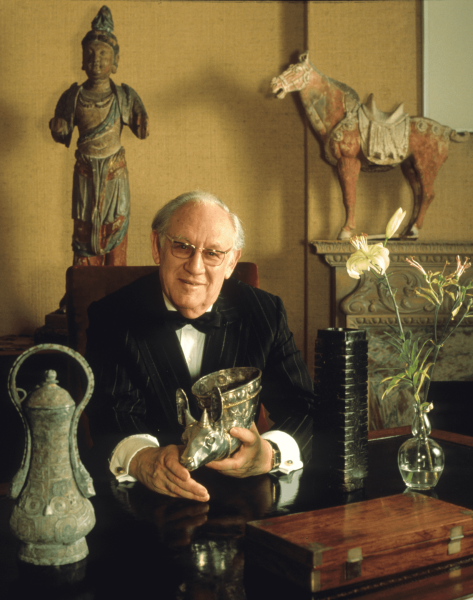
Even at the time, the Sackler family was already facing some legal problems, mostly because Arthur was accused of false advertising. In a 1959 investigation, The Saturday Review revealed that he fabricated the names of doctors used as references for a Pfizer antibiotic efficacy. His ad said the following:
More and more physicians find Sigmomycin the antibiotic therapy of choice.
Interestingly, none of these doctors actually existed.
Despite the controversies, it was this success that led Arthur to his fortune, and to the money the brothers used to buy Purdue Frederick. Even though he was criticized for this mishap, he wasn’t directly connected to the OxyContin epidemic because he died in 1987 and his estate sold his stake to his surviving brothers nearly a decade before OxyContin went on sale.
Arthur Sackler had quite a long life and was married three times in his 73 years. Arthur’s first wife was Else Sackler, with whom he had two daughters, Carol and Elizabeth before divorcing her. He had two more children with his second wife Marietta Lutze, named Arthur and Denise.
Today, his daughter, Elizabeth Sackler, is the benefactor of the Brooklyn Museum’s Center for Feminist Art, which carries her name.
Mortimer Sackler
The middle brother in the trio was Mortimer Sackler, who died at age 93 in 2010 after he bought Arthur’s part of Purdue Pharma with Raymond Sackler. Mortimer was co-chair of the company until 2007, known for his grand philanthropic endeavors, including the large donations he made to the Metropolitan Museum of Art and the Louvre. Like his older brother, Mortimer was also married three times.
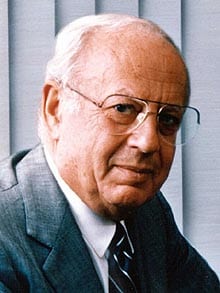
Raymond Sackler
The youngest of the initial Sackler family was Raymond, the CEO of Purdue Pharma. Just like Mortimer, he was accused of knowing about the addiction that comes from using OxyContin, the prescription opioid and his name has been dragged through the mud for his involvement in the opioid crisis.
Raymond was married once and died in 2017 at age 97.
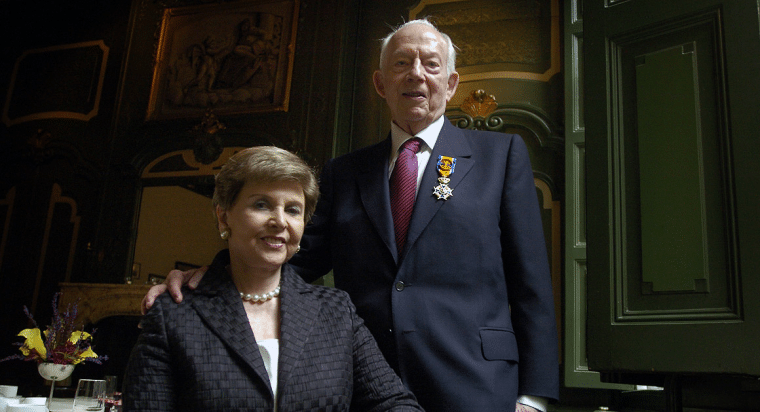
Other Members of the Sackler Family
Seeing how all three brothers are now deceased, many of their descendants, including children and grandchildren are under the most scrutiny for the hand Purdue Pharma had in the opioid epidemic. The Sackler family members who have been implicated in the lawsuit are the widowed matriarchs Beverly and Theresa Sackler and their children and grandchildren.
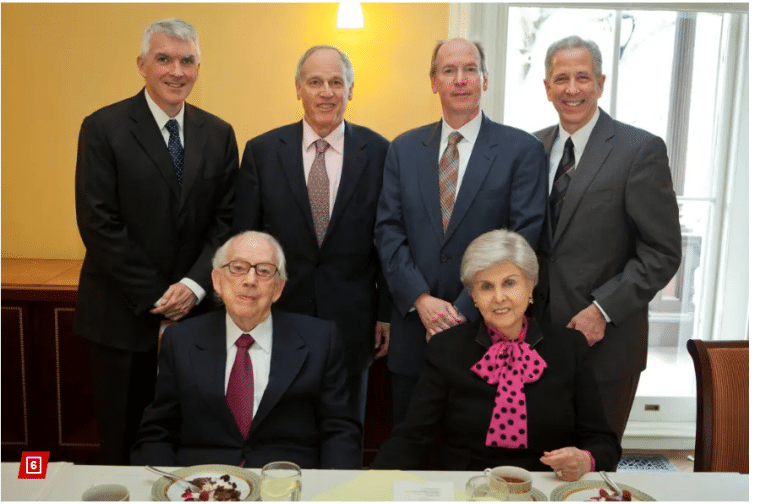
Let’s see who else in the family is included in the scandal.
Beverly Sackler
Beverly Sackler, the widow of Raymond, was once considered the “matriarch” of Purdue Pharma and was on the board from 1993 until just before her death in 2019. Her two sons, Richard Sackler and Jonathan Sackler are still on the board, as well as Richard’s son, David. At one point, Beverly was made an honorary knight by the Queen.
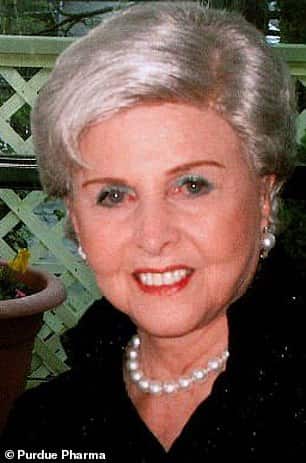
Richard Sackler
Richard Sackler is the eldest son of Raymond. He started working at the family company in 1971 as his father’s assistant and was a key figure in the development of OxyContin. He eventually became a co-chair of Purdue Pharma in 2003.
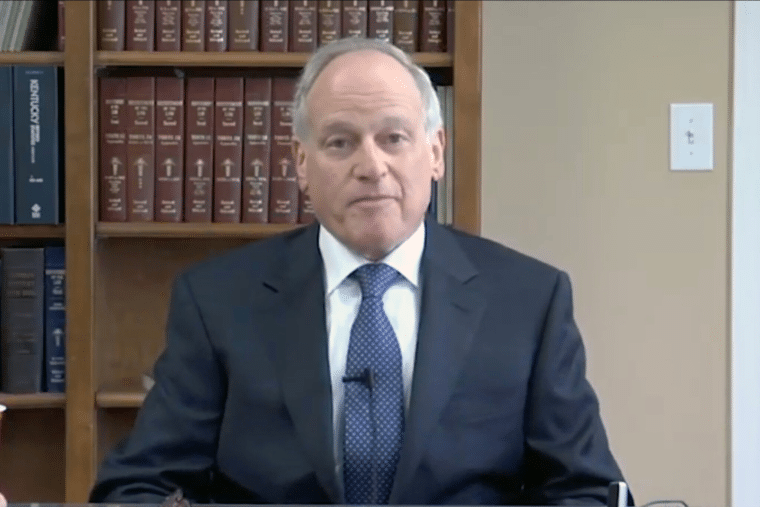
Since the scandal began, Richard Sackler appeared in court and said that he doesn’t think his family is responsible for the opioid crisis in the US. When asked about the number of people who died from the medicine, he responded: “To the best of my knowledge, and recollection, that data is not available.”
David Sackler
David Sackler is a third-generation member of the infamous family. Part of his written statement to Congress regarding the opioid crisis stated:
While we deny liability and are vigorously contesting these claims, … We are prepared to dedicate billions of dollars, and to relinquish our interest in Purdue, to fund a settlement that will bring help to those who need it.
Theresa Sackler
Theresa was the third and last wife of Mortimer, another honorary knight. She lives in London and is on the board of Purdue Pharma – and is one of the members of the Sackler family involved in the scandal.
Sackler Family Net Worth: The Rise and Fall of the World-Famous Pharmaceutical Company
Purdue Pharma was purchased by the brothers in 1952 and has since been owned by their descendants. It manufactured opioid drugs used for pain management such as hydromorphone, fentanyl, hydrocodone, codeine, and oxycodone – brand name OxyContin.
Since the beginning of Purdue Pharma, the Sacklers had an aggressive marketing approach working toward persuading doctors to prescribe their medicine, OxyContin in particular. Doctors were given free trips to pain management seminars, paid speaking engagements, and other perks to promote Purdue Pharma’s products.
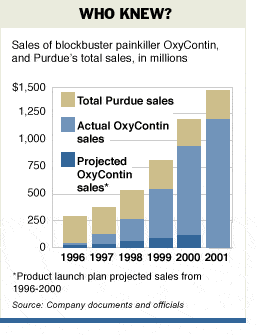
As a result of this strategy (and the extremely addictive nature of opioids), sales of the company’s drugs soared fivefold in just 5 years. Unfortunately, the number of people who died from overdoses soared even higher. Between 1999 and 2020, nearly 841,000 people died from drug overdoses with prescription and illicit opioids being responsible for 500,000 of these deaths. The problem has worsened in recent years with a record 112,000 overdose deaths in 2023 alone.
Not long after, critics described the Sacklers as “the worst drug dealers in history” and “the most evil family in America”.
History of Purdue Pharma
The company was initially founded in 1892 by John Purdue Gray and George Frederick Bingham, two medical doctors based in New York City. It was called the Purdue Frederick Company and made a tonic compound made with glycerin and sherry.
When the company was sold to the Sackler brothers, they relocated the business to Yonkers in New York. Under the leadership of the Sacklers, the pharmaceutical company, now Purdue Pharma, opened additional offices in Connecticut and New Jersey, with the headquarters located in Stamford, Connecticut.
The modern Purdue Pharma L.P. company was incorporated in 1991 and put its focus on pain management medication. At the time, the Sacklers marketed their brand as a pioneer in developing medicine for reducing pain.
In 1984, the company released an extended formulation of morphine, MS Contin. In 1996, OxyContin was released after an employee of the Food and Drug Administration, Curtis Wright, approved its use on a 12-hour dosage cycle.
Fast forward to September 2015, and Purdue Pharma’s website said that they had 1,700 people on the payroll, and announced that they were buying VM Pharma to gain access to commercial rights to the Phase II candidate VM-902A inhibitor program associated with pain relief, a deal that would have generated over $213 million for VM Pharma.
Not long after its release, OxyContin became a blockbuster drug and brought billions in revenue for the company. Between 1995 and 2001, the drug brought them a revenue of $2.8 billion, a number that grew to $31 billion by 2016 and $35 billion by 2017.
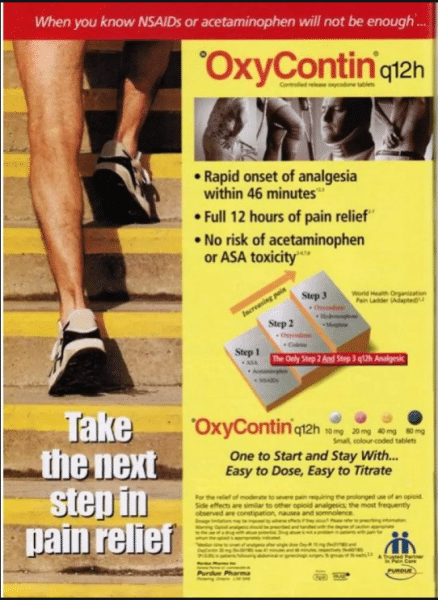
In 2018, eight members of the family were listed as former and active members of the board of directors of the company. Steve Miller became its chairman in July 2018.
By the beginning of 2019 and due to the legal actions taken against the company, the majority of Sacklers left the board, leaving only five members behind.
Purdue Pharma’s Structure
The pharmaceutical company has several branches:
- Purdue Pharma L.P.
- The Purdue Frederick Company
- Purdue Products L.P.
- Purdue Pharmaceutical Products L.P
The company has research labs in several locations including Cranbury, New Jersey, and handles the production in Totowa, New Jersey, Wilson, North Carolina, and Coventry, Rhode Island.
In 2007, Rhodes Pharmaceuticals, a sister company of Purdue Pharma was established in Rhode Island. This is one of the largest producers of off-patent generic opioids. Other sister companies are Napp Pharmaceuticals in the UK and Mundipharma.
The Legal Battle and the Family’s Role in the Opioid Crisis
Instead of prescribing smaller doses of the dangerous drug to avoid addiction and opioid overdoses or warning patients of the dangers of opioid addiction, doctors were advised by Purdue to keep their patients on a 12-hour cycle but give stronger doses.
At the beginning of 2000, widespread reports of OxyContin abuse started to surface. A program for proactive abuse surveillance, the Researched Abused, Diversion, and Addiction-Related Surveillance, sponsored by Purdue Pharma pronounced OxyContin the most commonly abused pain medication.
In 2003, the Drug Enforcement Administration (DEA), found that it was the company’s aggressive marketing methods that exacerbated the abuse of the drug.
In 2012, The New England Journal of Medicine published a study, showing the world how dangerous OxyContin was. Their study found the following:
76 percent of those seeking help for heroin addiction began by abusing pharmaceutical narcotics, primarily OxyContin.
This was the first time the connection was made between Purdue’s marketing of OxyContin and the epidemic in the US.
In 2018, a confidential report by the Justice Department was revealed by The New York Times, which showed that the company was aware of reports that pills were used by being crushed and snorted, as well as stolen from pharmacies.
These are just some of the proof used against the company and the family. In October 2006, the Deputy Chief of the Fraud Division at the US Department of Justice, Kirk Ogrosky wrote a memorandum that showed that prosecutors found evidence that executives at Purdue may have committed crimes including money laundering, wire fraud, and more to boost the sale of the drug.
This document reportedly confirms a settlement of $654 million between Purdue and the government over deceptive marketing claims.
By 2019, over a thousand lawsuits had been initiated against Purdue, both by state and local governments. By January of that year, 36 states were already suing the company, but in Massachusetts, Attorney General Maura Healey filed a lawsuit against eight members of the Sackler family, too, claiming they were personally responsible for deceptive sales practices.
The eight Sackler members named in the case are:
- Theresa
- Beverly
- Kathe
- Mortimer Jr.
- Jonathan
- Ilene
- David
- Richard
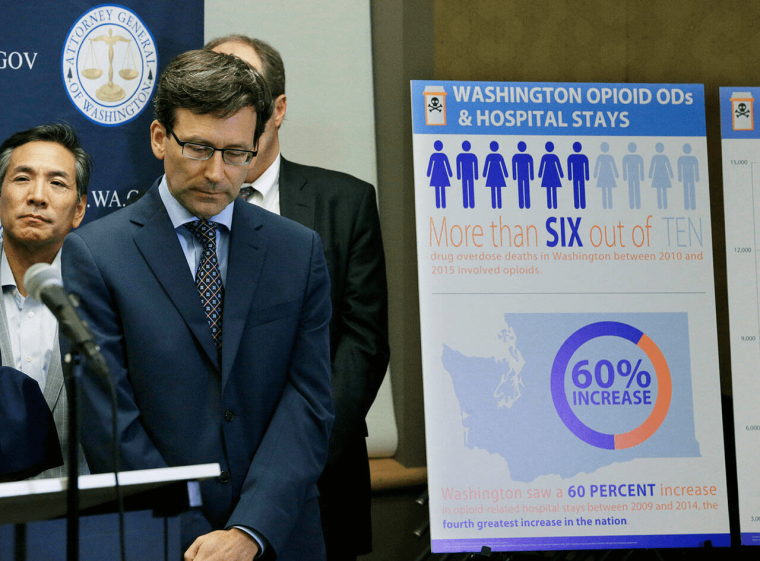
Purdue Pharma Settlement
In September 2019, Purdue Pharma and members of the Sackler family reached a tentative settlement with around 20 states, which would include $3 billion in cash over seven years, paid by the Sacklers, and that the company would file for bankruptcy and be transformed into a public benefit corporation.
The settlement also included a deal that the Sacklers would sell Mundipharma and give the proceeds toward the settlement for “individuals, families, and communities affected by opioid addiction and abuse”.
That same month, the company Purdue Pharma filed for Chapter 11 bankruptcy. The bankruptcy settlement doesn’t include any admission of wrongdoing.
As you might have guessed, not all states agreed to the settlement. Mundipharma is yet to be sold, as of January 2024. However, the litigation by this point has put quite the dent in the Sacklers’ fortune.
However, the story about the opioid epidemic and the family doesn’t end here. In October 2023, the Department of Justice announced that the company agreed to plead guilty to criminal charges around the marketing of OxyContin and that five members of the family would pay $225 million in civil penalties.
The family reportedly extracted billions from the company before it filed for bankruptcy, most of which is kept abroad.
A year ago, Purdue Pharma agreed to contribute up to $6 billion to the reorganization fund of Purdue on the condition that all Sacklers receive a release from civil liability. They would pay billions and in exchange, they would be immune from civil lawsuits stemming from the crisis and will get to keep billions of dollars in revenue.
“We are confident in the legality of our nearly universally supported Plan of Reorganization, and optimistic that the Supreme Court will agree,” Purdue Pharma said in a statement.
However, while this settlement was initially agreed upon in March 2023 by eight states, it is now being reviewed by the Supreme Court. The US Bankruptcy Trustee and the Justice Department oppose releasing the family from legal liability.
Purdue’s lawyers urge the justices to stay out of the case. Here is an excerpt from their statement: “We are disappointed that the U.S. Trustee … has been able to single-handedly delay billions of dollars in value that should be put to use for victim compensation, opioid crisis abatement for communities across the country, and overdose rescue medicines”
On June 27, 2024, the Supreme Court released its judgment in the case. The ruling has invalidated the $6 billion bankruptcy deal, meaning the Sackler family cannot be protected from personal liability in return for the business paying out to the victims. Republican-appointed Justice Gorsuch noted, “They obtained all this without securing the consent of those affected or placing anything approaching their total assets on the table for their creditors.”
In his dissenting opinion, Trump-appointed Justice Brett Kavanaugh “Today’s decision is wrong on the law and devastating to the more than 100,000 opioid victims and their families.”
The judgement means the Attorneys General who had come to the deal will now need to return to the table and hammer out a new deal with Purdue Pharma and the Sackler family – whose personal fortune may not be out of reach in negotiations.
What Else Has the Sackler Family Invested In?
While we cannot pinpoint each of the family member’s assets, one thing is for sure – they have invested a fortune in charitable causes. For many years, the family’s wealth was connected to philanthropy.
In 1974, the brothers who built their fortune from scratch donated $3.5 million to construct a new wing that held the Met’s crown jewel, the 2,000-year-old Temple of Dendur.
The Solomon R Guggenheim Museum has received funding of $9 million from the family over the years.
Because of the billions they donated, the family name can be found on a wing of the Louvre in Paris, the V&A, the Serpentine, the Metropolitan Museum of Art in New York, and even Shakespeare’s Globe in London.

However, due to the opioid epidemic and the legal cases, many of the museums and other institutions now believe that the family’s philanthropy is “reputation laundering”.
“That’s what they were doing with all of this money they were giving to museums and universities,” said Andrew Kolodny, the co-director of the Opioid Policy Research Collaborative at Brandeis University. “Their wealth was earned through the sales of a drug similar to heroin.”
As a result, some of the institutions have said they don’t want the Sacklers’ money anymore. The Tate and the Guggenheim Museum, for instance, have said publicly that they won’t take funds for the family.
Many institutions also removed the Sackler name, including:
- Smithsonian Institution in Washington D.C.
- Tate Modern in London, UK
- Harvard Art Museums in Cambridge, Massachusetts
Real Estate
While it is hard to pinpoint every real estate asset of each family member, we will discuss the most valuable assets that contribute to the billions that the family is collectively worth.
Dr. Richard Sackler, the former president and board chair of Purdue Pharma, and most probably the richest of the family, has recently parted with $30 million in property, according to the NY Post. He sold his eight-bedroom Florida estate worth $4.88 million in 2022 and posted his Beverly Hills property for sale for $20 million.
Mortimer D.A. Sackler, the cousin of Richard Sackler, bought a New York Fifth Avenue townhouse worth $38 million in 2020.
David and Joss Sackler have an Upper East Side apartment worth $6.5 million.
What Can We Learn From Sackler Family’s Story?
There’s a lot to learn from the story of the owners of Purdue Pharma, one of the biggest pharma companies in the world. The family’s legacy has been deeply affected by their significant role in the opioid crisis.
They have been involved in the widespread production, but also aggressive marketing of a highly addictive painkiller, which contributed to hundreds of thousands of overdose deaths and as a result, thousands of filed lawsuits that tarnish the Sackler name.
While the family hasn’t been criminally charged for opioid-related overdoses from the OxyContin scandal (and likely never will be), their story shows us how important it is to act morally.
Even for those who don’t care about others immoral actions like those of the Sacklers can lead to the destruction of their reputation, their name, and their life altogether.
Even if the family isn’t criminally charged, they are already facing immense public criticism and backlash, so their lives most certainly aren’t too easy these days (though they all still live in mansions).
Everything they’ve done so far, including their many philanthropic activities is overshadowed by the scandal.
Despite the philanthropic efforts, which include the establishment of the famous Richard and Beth Sackler Foundation, the family’s association with the crisis is a dark shadow on their legacy, a mark that will most likely never go away.
However, the Sackler family holds the name of one of the richest families in the world, which for years shared an encouraging story that you can make everything happen with a good idea, talent, and hard work.
The story of the three brothers is a rags-to-riches story of the sons of grocers who emigrated from Eastern Europe in search of a better life.
Within their lifetimes, the brothers amassed billions in fortune, more than the Rockefellers, giving future generations a luxury in life and security. It is a shame that the family’s descendants who were once lauded in philanthropy became an image of deadly corporate greed.
